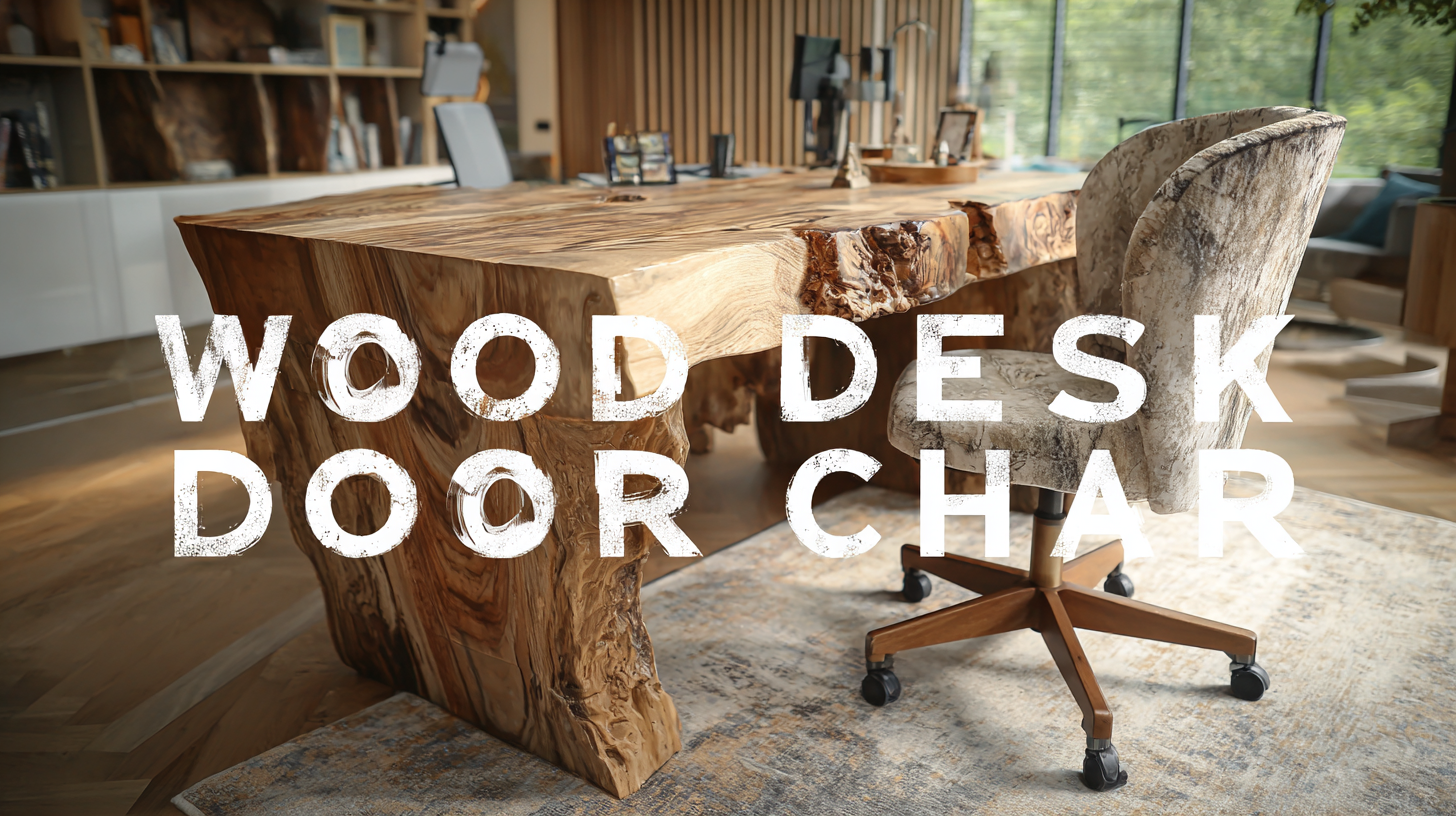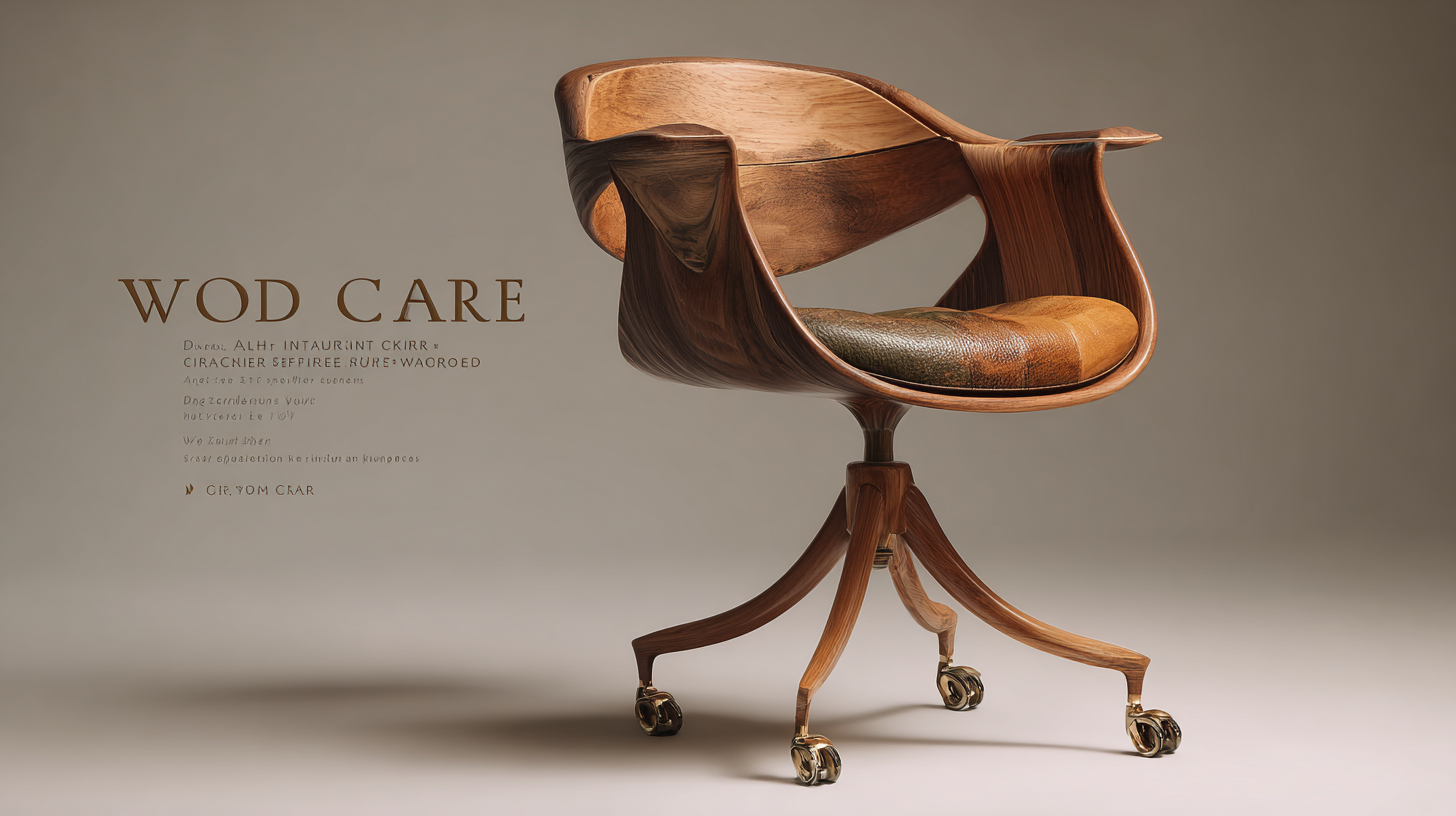2025: How Smart Innovations Are Redefining the Best Wood Desk Chair Experience for Global Buyers
In recent years, the global furniture market has witnessed a significant transformation, particularly in the realm of Wood Desk Chair, as manufacturers leverage smart innovations to enhance comfort, ergonomics, and sustainability. According to a report by Grand View Research, the global office furniture market is expected to reach USD 110 billion by 2025, driven by increasing demand for ergonomic solutions and the rise of remote work culture. As environmental concerns grow, buyers are also prioritizing sustainable materials and production processes, leading to a rising trend in the demand for responsibly sourced wood products.

Chinese factories, renowned for their exceptional manufacturing capabilities, are on the cutting edge of this revolution, offering innovative designs that cater to the needs of global buyers. This blog explores how these advancements are redefining the Wood Desk Chair experience, blending functionality with style and sustainability.
Exploring the Evolution of Wood Desk Chairs: Craftsmanship Meets Technology
The evolution of wood desk chairs showcases a fascinating blend of traditional craftsmanship and modern technology, reflecting the shifting preferences of global consumers. According to a recent market report by Research and Markets, the global ergonomic office chair market is expected to reach $14.6 billion by 2026, driven by a growing awareness of health and well-being in workplace environments. This surge in demand highlights the importance of combining aesthetics with functionality, leading to innovative designs that prioritize user comfort.
In the realm of wood desk chairs, the craftsmanship of previous eras, particularly during the Ming and Qing dynasties, is being revitalized through contemporary techniques. For instance, traditional joinery methods, which emphasize the natural characteristics of wood, are being merged with cutting-edge technologies such as computer-aided design (CAD) for enhanced precision. This fusion not only preserves the beauty of handcrafted furniture but also meets modern durability and ergonomic needs. As designers experiment with materials and shapes, the challenge remains: how to balance innovation with the authenticity of wood as a natural resource. Such advancements promise a new chapter for wood desk chairs, ensuring they remain relevant in the evolving landscape of office furniture.
Key Features of Ergonomic Wood Desk Chairs for Enhanced Comfort and Productivity
In 2025, the landscape of office furniture continues to evolve, with ergonomic wood desk chairs at the forefront of innovation. Key features that enhance comfort and productivity have become essential for global buyers seeking the perfect work environment. One such feature is adjustable lumbar support, which caters to individual spinal needs, promoting better posture and reducing the risk of back pain. This adjustment capability allows users to tailor their seating experience, ensuring prolonged comfort during long hours of work.
Another significant aspect of ergonomic wood desk chairs is their material design, combining aesthetics with functionality. High-quality, sustainable wood, paired with breathable upholstery, not only adds a touch of elegance to any office space but also encourages airflow, preventing discomfort caused by prolonged seating. Additionally, many models now incorporate advanced technologies such as built-in massage functions or temperature control, further enhancing the user experience and fostering a productive work atmosphere. These innovations reflect a growing understanding of the connection between comfort, well-being, and productivity in the modern workspace.
2025: How Smart Innovations Are Redefining the Best Wood Desk Chair Experience for Global Buyers
| Feature | Description | Benefits |
|---|---|---|
| Ergonomic Design | Curved backrest that supports natural spine alignment. | Reduces back pain and improves posture during long working hours. |
| Adjustable Height | Gas lift mechanism for height adjustment. | Accommodates users of different heights for optimal comfort. |
| Breathable Materials | Mesh or fabric upholstery that allows airflow. | Keeps the user cool and comfortable over long periods. |
| lumbar Support | Removable or adjustable lumbar pillows. | Provides targeted support to lower back, enhancing comfort. |
| Rolling Casters | Smooth-rolling wheels for easy movement. | Allows for mobility without straining, enhancing productivity. |
| Sustainable Wood | Made from responsibly sourced wood materials. | Eco-friendly choice that reduces ecological footprint. |
Sustainable Materials: How Eco-Friendly Choices Shape Modern Wood Desk Chairs
In 2025, the landscape of wood desk chairs is being revolutionized by a surge of sustainable materials that cater to the eco-conscious consumer. As global buyers increasingly prioritize environmental responsibility, manufacturers are responding by incorporating reclaimed wood, bamboo, and innovative composites made from recycled materials into their designs. This shift not only enhances the aesthetic appeal of wood desk chairs but also aligns with the values of a generation that seeks to reduce their carbon footprint while enjoying functional and stylish furnishings.

Additionally, contemporary furniture brands are exploring new eco-friendly production techniques. By utilizing sustainable forestry practices and non-toxic finishes, these innovations are redefining what it means to furnish an office space responsibly. Millennials, in particular, are gravitating towards pieces that tell a story of sustainability, sparking discussions around the importance of mindful consumption. This blend of style, comfort, and eco-friendliness is setting the standard for the modern wood desk chair, making it an essential choice for anyone looking to create a sustainable workspace.
Smart Innovations in Design: Revolutionizing the User Experience in Office Seating
In 2025, the world of office seating is witnessing a transformative shift driven by smart innovations that prioritize user experience. Modern wood desk chairs are not just about aesthetic appeal; they are increasingly designed with advanced ergonomic features and integrated technologies that respond to individual user needs. From adjustable lumbar support to temperature-regulating materials, these chairs are evolving to provide optimal comfort and support throughout the workday.
Additionally, the integration of smart technology into office seating is enhancing connectivity and personalization like never before. With built-in sensors, users can receive real-time feedback on posture and movement, encouraging healthier habits. Some chairs even offer customization options through mobile applications, allowing users to adjust settings based on their preferences and work routines. As workplaces continue to embrace remote and hybrid models, these innovations in design are redefining what it means to have an efficient and enjoyable workspace, making the office experience better for global buyers.
2025: Smart Innovations Redefining Office Seating Experience
This chart illustrates the factors contributing to the user experience in office seating for global buyers by 2025. Each factor's user satisfaction is rated on a scale of 1 to 10, highlighting the importance of ergonomic design, smart features, sustainability, customization, and aesthetics.
Choosing the Right Wood Desk Chair: Factors to Consider for Global Buyers
When selecting a wood desk chair, global buyers should consider several key factors to ensure they make the right choice for their needs. First and foremost, comfort is paramount. Look for ergonomic designs that support proper posture, as this will enhance productivity during long hours of work. Pay attention to the chair's dimensions and adjustability features, which can cater to different body types and preferences.

Tip: Always check for eco-friendly certifications when purchasing wood furniture, as sustainable options are increasingly important to global consumers seeking environmentally responsible choices.
Lastly, think about the chair's design and style. It should align with your personal taste and the overall decor of your office space. A well-designed chair not only serves a functional purpose but also adds character to your environment, making it a worthwhile investment.
Tip: Don't hesitate to try out different styles and brands to find the perfect fit; many retailers offer trial periods that allow you to test the chair in your own home or office.